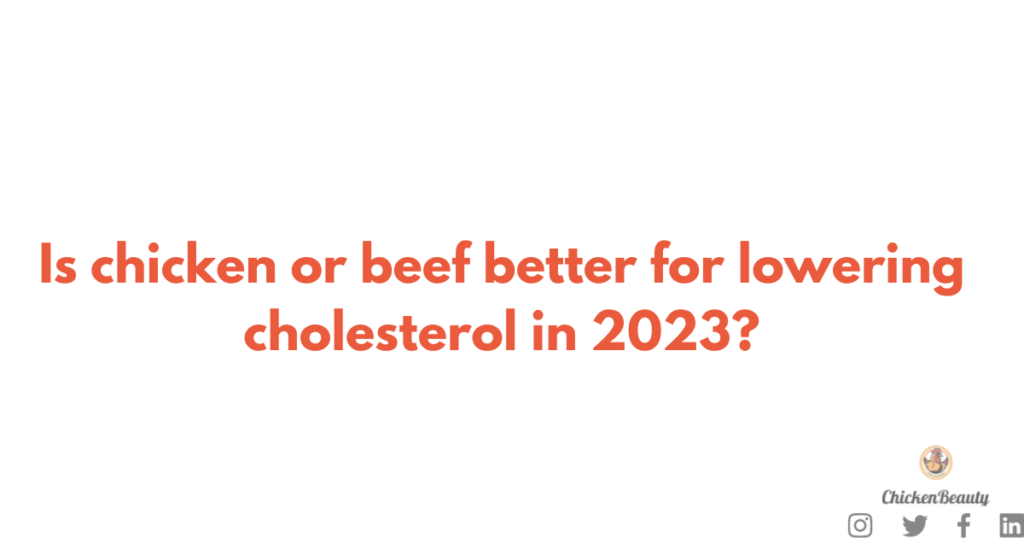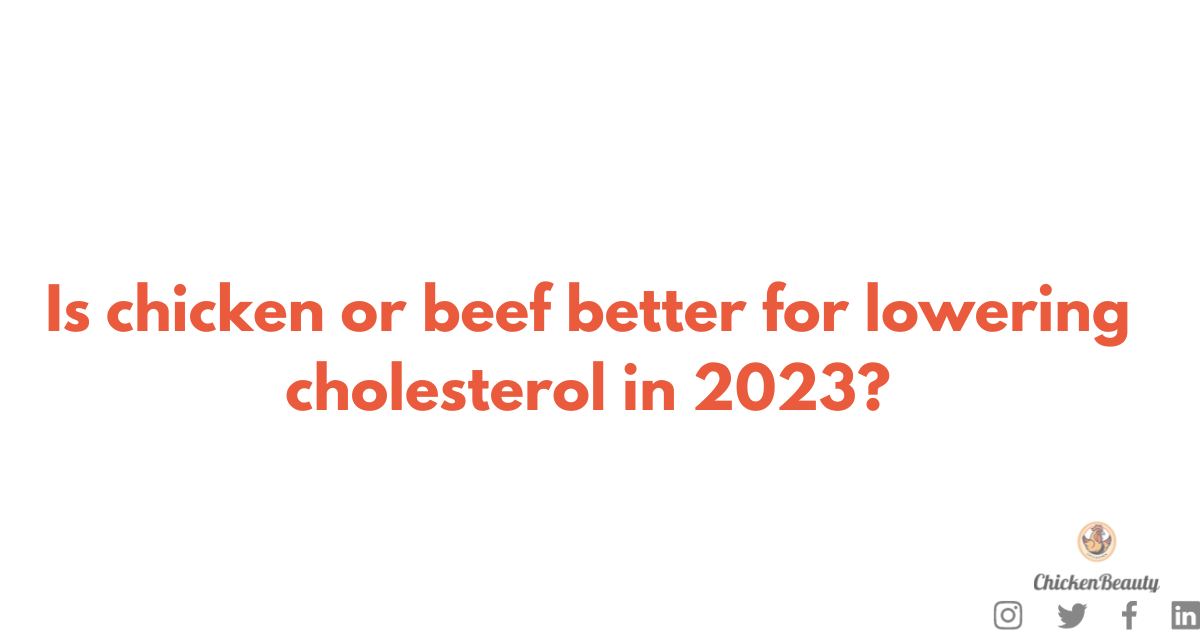chicken or beef better for lowering cholesterol The cholesterol and saturated fat content in chicken and beef can vary depending on the specific cut and how they are prepared. These variations can impact the levels of low-density lipoprotein (LDL) cholesterol in the bloodstream. Elevated LDL levels are associated with an increased risk of significant health conditions like heart disease and stroke. This article explores the saturated fat found in chicken and beef, as well as its potential impact on an individual’s cholesterol levels.

Is chicken or beef better for lowering cholesterol?
The choice between chicken and beef for cholesterol management may hinge on the specific cut. According to information from the American Heart Association (AHA), the levels of saturated fat in meat can vary based on the cut and preparation methods.
When it comes to beef, opting for lean cuts with minimal visible fat can help reduce saturated fat intake. Examples of lean beef cuts include sirloin, loin, round, and chuck. Another approach to reduce saturated fat in beef is to select “choice” or “select” grades instead of “prime” and to opt for lean or extra lean ground beef.
For chicken, it is advisable to favor white meat and to remove the skin prior to cooking or consumption. The AHA suggests that there may not be substantial differences in terms of cholesterol impact between chicken and red meat.
Research has indicated that diets high in red or white meat can lead to higher levels of LDL cholesterol when compared to diets centered around non-meat protein sources. Both white and red meat appear to have similar effects on cholesterol levels.
The following table compares the cholesterol in different cuts of chicken and beef per 100 grams (g):
| Chicken cuts | Beef cuts |
| chicken wings, skinless: 85 milligrams (mg)Trusted Source | top sirloin steak: 92 mgTrusted Source |
| chicken drumstick, skin on: 92 mgTrusted Source | flank steak, fat trimmed: 79 mgTrusted Source |
Best ways to prepare meat 2024
Here are some recommended tips for preparing meat in a healthier way to reduce saturated fat:
- Trim visible fat from the meat before cooking.
- Opt for broiling over pan-frying, and use broiling to brown the meat.
- Use a rack to allow fat to drain when broiling, roasting, or baking meat.
- Use wine, fruit juices, or plant-based oil marinades to moisten the meat instead of basting it with drippings.
- Cook liquid-based meat dishes like stews a day ahead and refrigerate them, then remove the top layer of hardened fat.
- Remove the skin from poultry before cooking or consuming, and lean towards white meat choices more often.
How much meat should I eat with high cholesterol?
The National Council on Aging suggests that individuals should restrict their consumption of foods rich in saturated fat and cholesterol, such as steak. This entails consuming modest portion sizes, not exceeding 3 ounces (oz), and indulging in such foods only once a week.
It is advisable to control or, if possible, eliminate processed meats from one’s diet since these can be high in saturated fats, as well as laden with calories and sodium. Some examples of processed meats include salami, hot dogs, sausage, and bologna.
The American Heart Association (AHA) recommends capping daily saturated fat intake at no more than 13 grams. If an individual consumes around 2,000 calories per day, they should limit their saturated fat intake to a maximum of 120 calories from saturated fat.
Best Alternatives to chicken and beef
Opting for plant-based protein can offer a healthier choice for reducing cholesterol and saturated fat intake in comparison to chicken or beef. Plant-based protein sources encompass:
- Beans
- Lentils
- Nuts and nut butters
- Seeds
- Green vegetables like spinach and broccoli
- Chickpeas
- Quinoa
- Soy milk
- Potatoes
- Peas
- Tofu
- Tempeh
- Seaweed
Another alternative to chicken or beef is fish. Fish tends to be low in saturated fat, and certain oily fish varieties like salmon, herring, or trout are rich in heart-healthy omega-3 fatty acids. Shellfish options such as crab, shrimp, and lobster also have low saturated fat content.
For optimal results, it’s recommended to consume at least 8 ounces of fish per week. When preparing fish, avoid frying and instead consider broiling, grilling, baking, or boiling as healthier cooking methods.
Frequently asked questions
What is the best meat to eat to lower cholesterol?
Opt for meat cuts with minimal to no visible fat. When it comes to poultry, like chicken or turkey, choosing options without the skin is a leaner choice compared to poultry with the skin, and it typically contains less fat than duck or goose.
To reduce saturated fat intake, consider broiling as a cooking method instead of frying, remove any excess fat during the cooking process, and use vegetable oils in place of animal-based fats.
What are the 2 best foods for lowering cholesterol?
Three of the best foods for lowering cholesterol include:
- Oats: Oats are rich in beta-glucan, a soluble fiber type that aids in lowering high LDL cholesterol levels.
- Fruits and vegetables: Many fruits and vegetables are also high in soluble fiber, which assists in reducing the amount of cholesterol the body absorbs.
- Foods high in heart-healthy fats: Nuts, seeds, avocados, oily fish, and olives are beneficial for increasing high-density lipoprotein (HDL) cholesterol, often referred to as “good” cholesterol.

